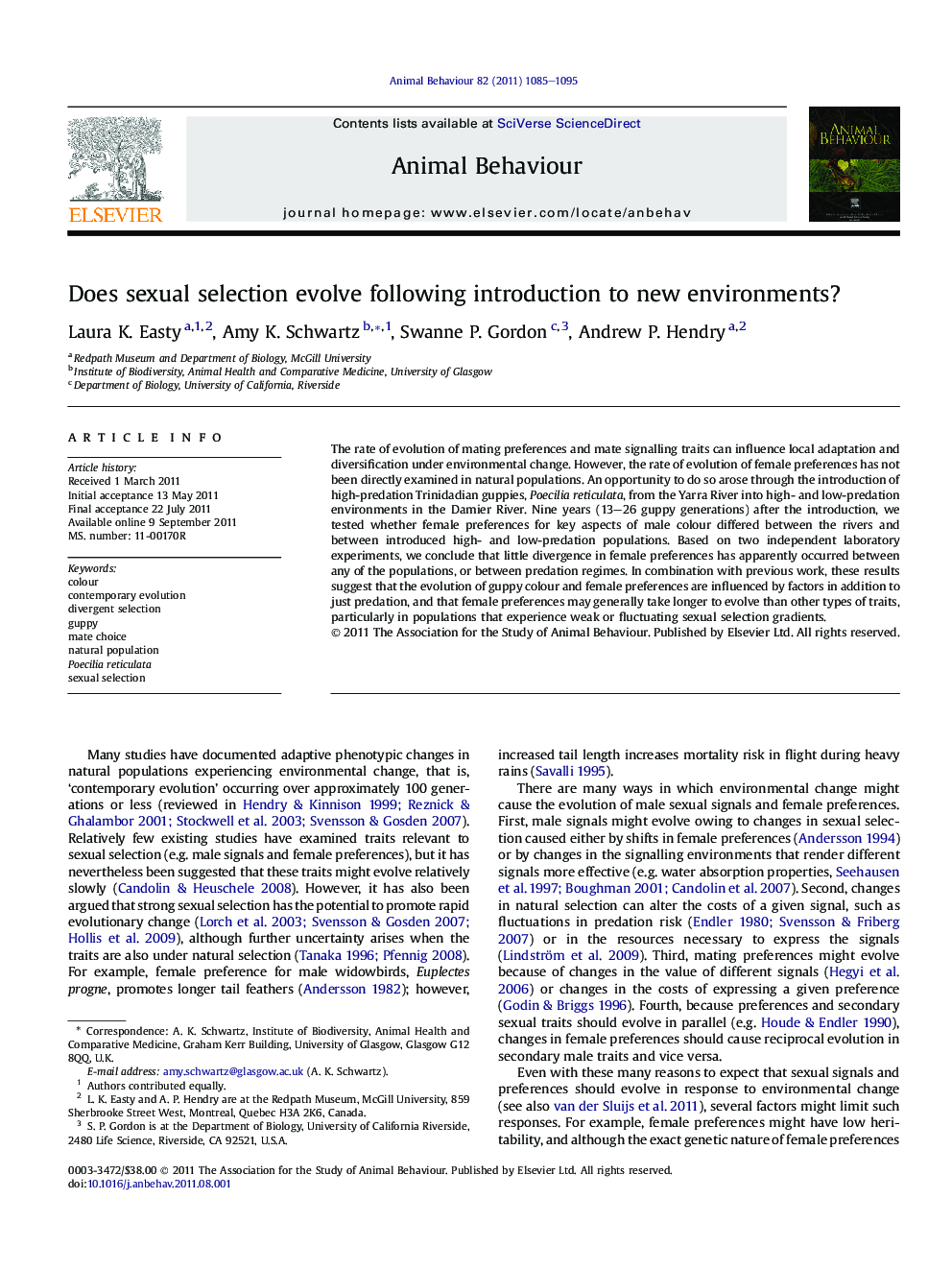| کد مقاله | کد نشریه | سال انتشار | مقاله انگلیسی | نسخه تمام متن |
|---|---|---|---|---|
| 2416929 | 1104302 | 2011 | 11 صفحه PDF | دانلود رایگان |

The rate of evolution of mating preferences and mate signalling traits can influence local adaptation and diversification under environmental change. However, the rate of evolution of female preferences has not been directly examined in natural populations. An opportunity to do so arose through the introduction of high-predation Trinidadian guppies, Poecilia reticulata, from the Yarra River into high- and low-predation environments in the Damier River. Nine years (13–26 guppy generations) after the introduction, we tested whether female preferences for key aspects of male colour differed between the rivers and between introduced high- and low-predation populations. Based on two independent laboratory experiments, we conclude that little divergence in female preferences has apparently occurred between any of the populations, or between predation regimes. In combination with previous work, these results suggest that the evolution of guppy colour and female preferences are influenced by factors in addition to just predation, and that female preferences may generally take longer to evolve than other types of traits, particularly in populations that experience weak or fluctuating sexual selection gradients.
► We test for changes in sexual selection following an experimental introduction in guppies.
► Introduced populations do not differ in male mating signals or female preferences.
► Female preferences vary between rivers but not predation environments.
► Female preferences do not predictably respond to divergent natural selection.
Journal: Animal Behaviour - Volume 82, Issue 5, November 2011, Pages 1085–1095